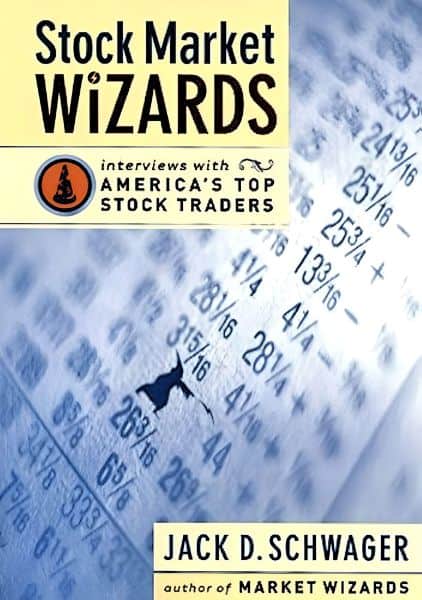I think a lot of successful traders are unemotional, hardworking, and disciplined. Ironically, I find myself lacking on each of those counts. I get very emotional; I really don’t work that hard; and I’m not as disciplined as I should be. I would attribute my own success to having both conviction about my gut feelings and the ability to act on them quickly. That is so critical. ~ Stuart Walton
Stuart Walton is a Canadian trader who gained recognition in Jack Schwager’s book Stock Market Wizards. His hedge fund had great success, delivering an average annual compounded return of 115% for the better part of a decade. Unfortunately, he had to shut his fund down in 1999 due to the strain of a failed marriage, but he returned to trading in 2001.
The following is a breakdown of Stuart Walton’s trading strategy and the lessons learned over his successful career:
Stuart Walton On Trading Mistakes
At that point, I made the first trade for my own account. My girlfriend, who later became my wife, worked for Liz Claiborne. She kept telling me how great her company was doing: “I don’t even have to call my customers, they’re calling me.” Since I didn’t have any money to invest, I called my father for a loan. “Dad,” I said, “I have a great idea; you just have to lend me some money.” He loaned me $10,000, and I put it all into Liz Claiborne stock. The stock quickly went up three points, and I took my profits. But the worst thing you can do as a beginning trader is to have your first trade work. Within three weeks, I had lost not only all my profits from the Liz Claiborne trade, but also all the money my father had lent me. I was so taken with the success of my first trade that I started listening to all sorts of tips and rumors. I was cleaned out in three weeks. It took me five years, a little bit at a time, to pay back my father. […] Ironically, the Liz Claiborne stock, for which I had originally borrowed the money, continued to go straight up, quintupling in a year.
And Walton’s missteps didn’t stop there…
Eventually, after watching the markets, I decided I had to start trading again. Although I didn’t have any money, I realized that I could take out a home-equity loan and do whatever I wanted with the money. I said to myself, “I can liquefy my house and invest it.” […] I had placed a down payment of $75,000 on the house, and I took out a loan of $50,000 against it. Within three weeks of taking out the loan, I had lost 75 percent of the money. […] I started selling stocks that I thought were up too high—powerhouse stocks like Liz Claiborne and the Gap—and buying stocks that I thought were down too low. In effect, I was shorting good companies and buying bad companies. […] I couldn’t bring myself to tell my wife that I had lost almost all the money […]I did tell her that I was going to invest it, but I told her that I was going to invest it in a conservative dividend play […] I had trouble sleeping the entire month[…] One day a buddy who worked beside me gave me a tip to buy Commodore Computer. “I think this story is really going to work,” he said. “We’re hearing that their latest game is going to be a highflier.” I was so desperate that I told myself, “I’m going to do it.” I took everything that was left in my account, leveraged it at 200 percent, and bought the stock. That was the low point in my life. The $75,000 I had put into my house was my entire savings. The thought that because of some gambling I could lose everything that I had built up in ten years of saving really scared me. It was the black abyss. The stock went from $10 to $17, and I got out. After I liquidated, the stock reached as high as the low twenties, but it eventually went back down to zero when the company went bankrupt. That single trade was enough to almost make me whole again. […] It was just luck[…] That Commodore trade saved me. […] I realized that I was being bailed out by the stock market gods. I did learn my lesson. From that point on, I traded so much better. […]The shock of the experience gave me clarity. I understood that stocks don’t go up and stay up because of stories, tips, or people’s opinions; they go up for specific reasons. I was determined to find those reasons, shut out the world, and then act on my own knowledge. I started to do that, and over time, my record got better and better.
Walton didn’t have a real trading strategy in the beginning of his career. He didn’t have an edge. Instead, he relied on his untrained instincts and emotions which lead him to disaster time and time again. He was able to get lucky on his final gamble, but most traders are not so fortunate… especially when using leverage like he did.
Stuart Walton’s Stock Picking Strategy
Trading without a strategy left Walton traumatized, but it also gave him a wake-up call. From then on he began using a growth stock strategy that mixed fundamentals, technicals, global macro, and gut feel:
The theme I noticed back then that has persisted through bull and bear markets is: Good companies, on balance, continue to go up. […] I look for companies that have been blessed by the market. They may be blessed because of a long string of quarters they’ve made [quarters in which the company’s reported earnings reached or exceeded expectations], or for some other reason. You can identify these stocks by how they act. For some reason, the market goes to some stocks, and it doesn’t go to others, no matter how many brokers tell their clients to buy these other stocks because they are cheap. […] The hardest thing to do is to buy a high-flying stock or to sell a stock that has gone down a lot, but I always find that the hardest thing to do is the right thing to do. It’s a difficult lesson to learn; I’m still learning it now. […] The fundamentals of the stock are only about 25 percent of it. […] Another 25 percent is technical. […] I like stocks that show relative linearity in their trend. I don’t want stocks that are swinging all over the place. […] Another 25 percent is watching how a stock responds to different information: macroeconomic events, its own news flow. I also pay attention to how a stock reacts to going to round numbers: $20, $30, etcetera. I try to get a feel whether a company has that special shine to it. […] I want to see a stock move higher on good news, such as a favorable earnings report or the announcement of a new product, and not give much ground on negative news. If the stock responds poorly to negative news then it hasn’t been blessed. […] The last 25 percent is my gut feeling for the direction of the market as a whole, which is based on my sense of how the market is responding to macroeconomic news and other events. It’s almost like looking at the entire market as if it were an individual stock.
Stuart Walton On Following The Market
My philosophy is to float like a jellyfish and let the market push me where it wants to go. I don’t draw a line in the sand and say this is my strategy and I’m going to wait for the market to come to me. I try to figure out what strategies are working in the market. One year it might be momentum, another year it might be value. […]I’ll look at everything and listen to as many people as I can, from cab drivers to stock analysts. Then I sit back and try to see what idea rises to the top. […] I constantly evaluate market sentiment—Is the market hopeful? Is it fearful?—and wait for the price action to confirm my assessment. […] Sometimes the opportunities are so obvious that you almost can’t lose when they come around; the only problem is that they don’t come around that often. The key is not to lose money in the times in between.
Walton also likes to test his positions to get a feel for the market:
When I buy a stock, even if it’s a core position of a few hundred thousand shares, I might be in and out of it twice in the same day and six times in the same week, trying to get a feel about whether I’m doing the right thing. If I’m not comfortable with the way the stock is trading, I get out.[…] I get out either because the stock looks as though it’s rolling over, and I am in danger of losing what I have made, or because the stock has made too much money in too short a period of time.
And if Walton realizes he doesn’t have a feel for the market, he plays defense and downsizes his positions:
I trade smaller. By doing that, I know I’m not going to make a lot, but I also know I’m not going to lose a lot. It’s like a pit stop. I need to refresh myself. Then when the next big opportunity comes around —and it always does—if I catch it right, it won’t make any difference if I’ve missed some trades in the interim.
Market Wizards Bill Lipschutz and Mark D Cook share a similar approach. Shrinking your trades during a losing streak is a solid strategy that not only protects your money but also maintains your mental capital.
Stuart Walton’s Trading Rules
- Be patient—wait for the opportunity.
- Trade on your own ideas and style.
- Never trade impulsively, especially on other people’s advice.
- Don’t risk too much on one event or company.
- Stay focused, especially when the markets are moving.
- Anticipate, don’t react.
- Listen to the market, not outside opinions.
- Think trades through, including profit/loss exit points, before you put them on.
- If you are unsure about a position, just get out.
- Force yourself to trade against the consensus.
- Trade pattern recognition.
- Look past tomorrow; develop a six-month and one-year outlook.
- Prices move before fundamentals.
- It is a warning flag if the market is not responding to data
- correctly.
- Be totally flexible; be able to admit when you are wrong.
- You will be wrong often; recognize winners and losers fast.
- Start each day from last night’s close, not your original cost.
- Adding to losers is easy but usually wrong.
- Force yourself to buy on extreme weakness and sell on extreme strength.
- Get rid of all distractions.
- Remain confident—the opportunities never stop
If you want more lessons from legendary investors like Stuart Walton, check out our free guide on the strategies of the most successful traders here.










